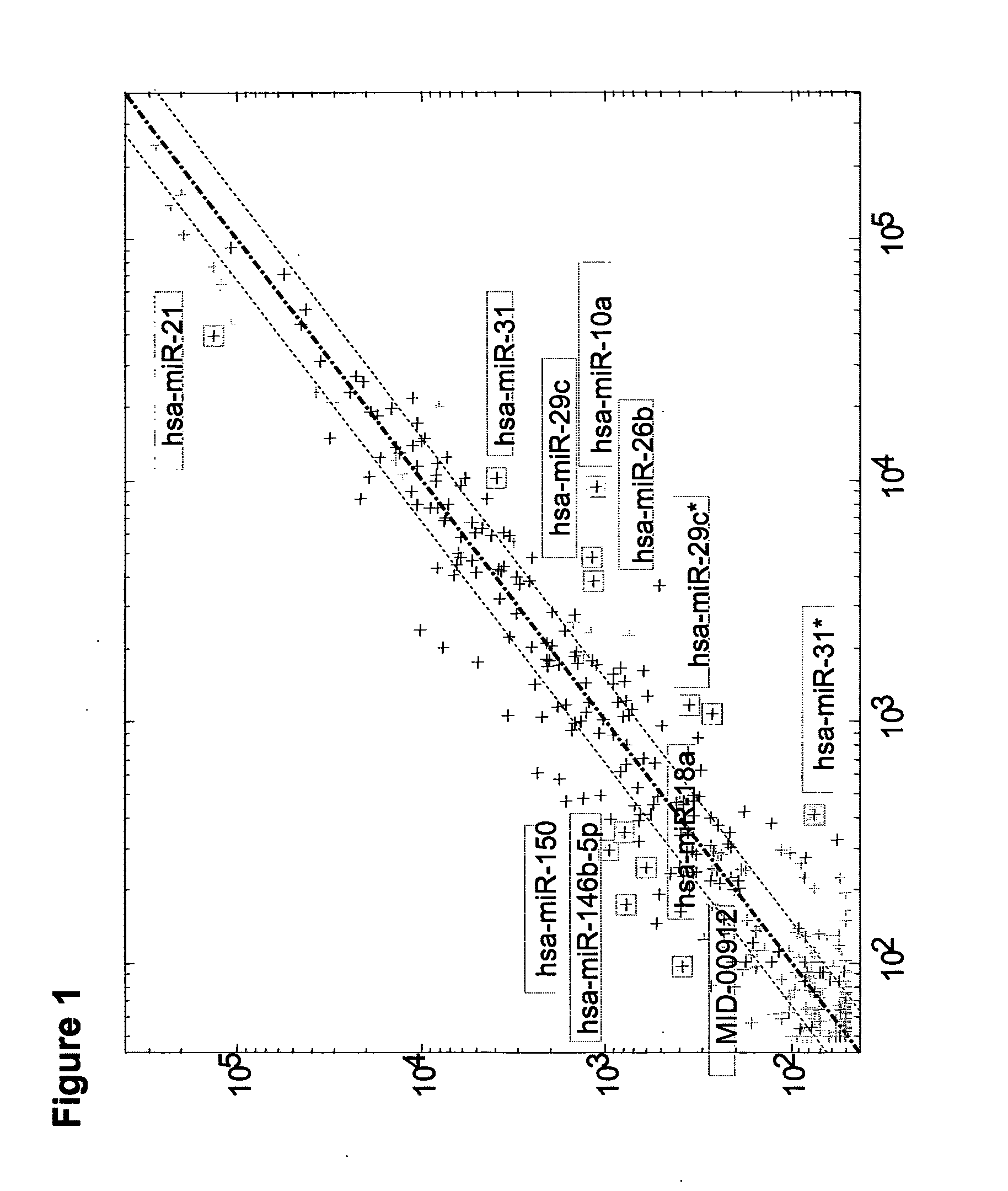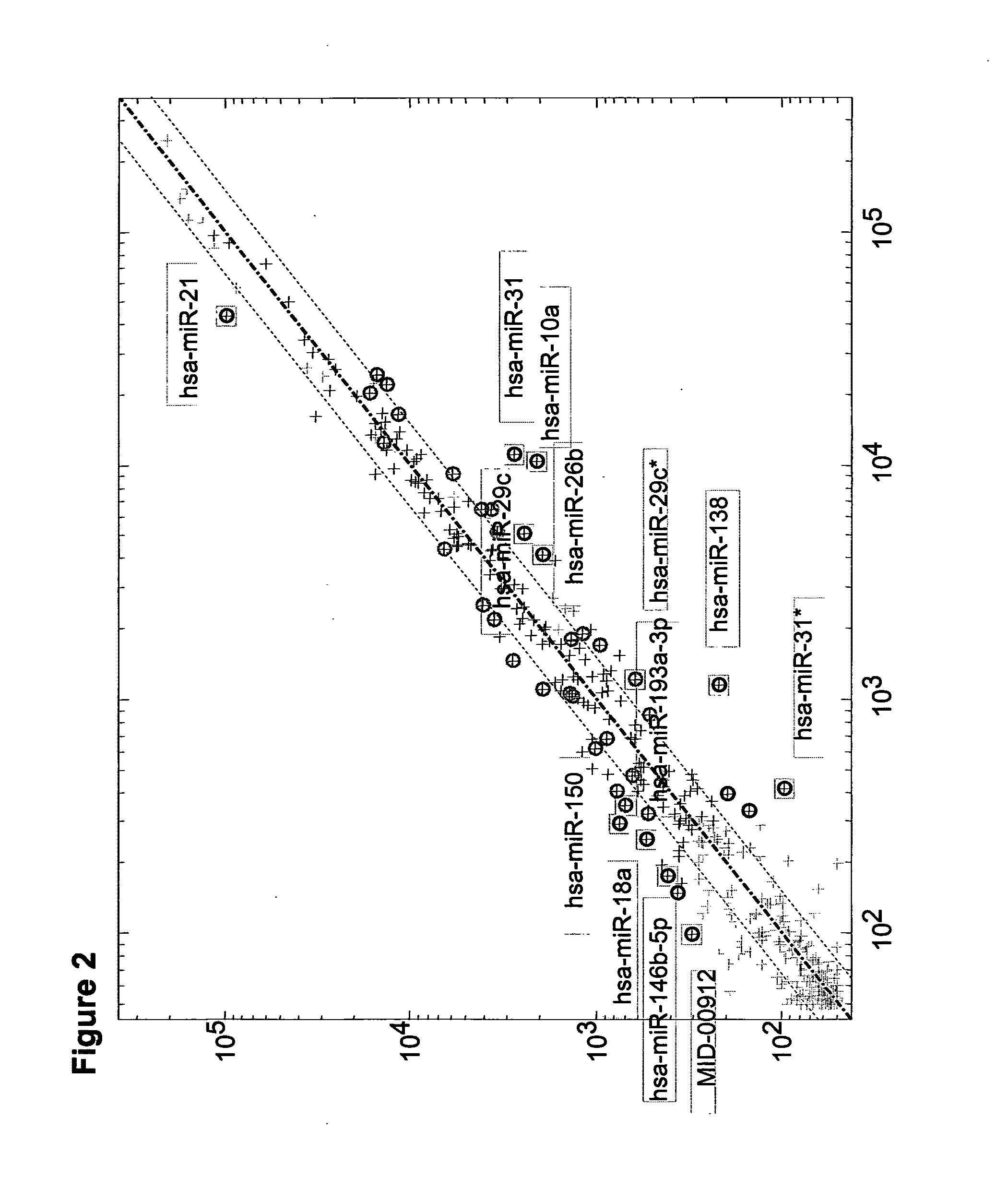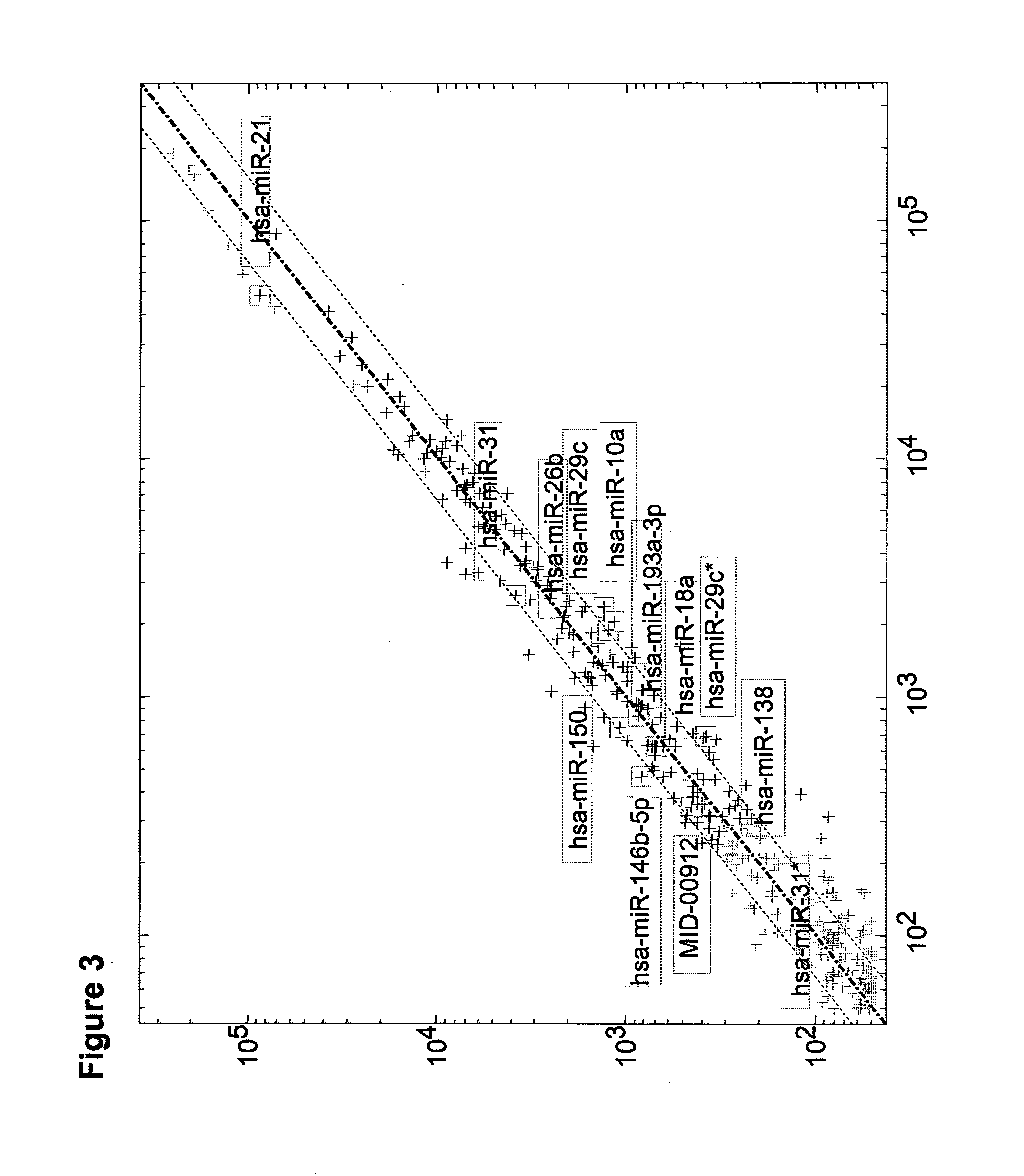Compositions and methods for determining the prognosis of bladder urothelial cancer
a technology of urothelial cancer and prognosis, applied in the field of compositions and methods for determining the prognosis of bladder urothelial cancer, can solve the problems of poor prognosis, poor ability of these factors to assess patient prognosis, and large gap between low and high grade tumors in biological behavior and clinical outcom
- Summary
- Abstract
- Description
- Claims
- Application Information
AI Technical Summary
Benefits of technology
Problems solved by technology
Method used
Image
Examples
example 1
Materials and Methods
[0171]a. Biological Samples
[0172]73 primary bladder tumor specimens (formalin fixed, paraffm-embedded, FFPE) obtained by bladder cytoscopy and transurethral resection procedure were included in the study. This study was undertaken with the approval of the internal review boards of Soroka University Medical Center.
[0173]Total RNA enriched in microRNA was isolated from the FFPE bladder tumor specimens and all RNAs extracted were hybridized onto microarrays according to the RNA extraction and miR array platform protocols described below.
Of the 73 samples, cohort sizes were:
[0174]Stable non muscle invasive (the sampled tumor was non-invasive and no progression occurred within 5 years)—n=26
[0175]Unstable non muscle invasive (the sampled tumor was non-invasive and progression occurred within 5 years)—n=18
[0176]Invasive (the sampled tumor was invasive)—n=29
[0177]Total RNA was isolated from seven to ten 10-μm-thick FFPE tissue sections per case using th...
example 2
Specific MicroRNAs are Able to Predict the Risk of Invasiveness of Bladder Cancer
[0187]73 bladder tumors were removed using a transurethral resection procedure. 29 of these samples were classified as invasive and 44 were classified as non muscle invasive. Out of the 44 patients with non muscle invasive bladder cancer, 26 did not progress during the 5-year follow up, and 18 had a progression of tumor stage during the 5-year follow up. The first group was termed ‘stable non muscle invasive’ (no-progression) and the second group was termed ‘unstable non muscle invasive’ (invasive progression). The microRNA expression levels of these samples were profiled by microarray and compared between the three groups. The main goal was to find microRNAs that are differentially expressed between the stable non muscle invasive tumors and the unstable non muscle invasive tumors (which progress to invasion), in order to predict progression in patients with non muscle invasive bladder cancer.
[0188]micr...
example 3
[0200]qRT-PCR Assay for Predicting the Risk of Invasiveness of Bladder Cancer
[0201]A qRT-PCR assay was performed, in accordance to example 1f. above, on a subset of the samples and microRNAs used in the microRNA assay described in Example 2.
[0202]Levels of five microRNAs which had different expression in unstable non muscle invasive vs. stable non muscle invasive samples were measured on nine of the unstable non muscle invasive samples and ten of the stable non muscle invasive samples. These miRs were hsa-miR-26b (SEQ ID NO: 8), hsa-miR-146b-5p (SEQ ID NO: 2), hsa-miR-21 (SEQ ID NO: 1), hsa-miR-25 (SEQ ID NO: 42) and hsa-miR-138 (SEQ ID NO: 7).
[0203]The sequences of the Fwd primers, MGB probes and reverse primer used in the PCR are provided in table 2 below.
TABLE 2 PCR primers and probesReverse primer: GCGAGCACAG AATTAATACG ACSEQ ID NO: 76SEQSEQFwd (Forward miRIDIDspecific) primerNO:MGB probeNO:hsa-miR-26bCAGTCATTTGGCTT66CCGTTTTTTTTTTT71CAAGTAATTCAGGATACCTATCChsa-miR-146b-5pCAGTCAT...
PUM
| Property | Measurement | Unit |
|---|---|---|
| Fraction | aaaaa | aaaaa |
| Level | aaaaa | aaaaa |
Abstract
Description
Claims
Application Information
 Login to View More
Login to View More - R&D
- Intellectual Property
- Life Sciences
- Materials
- Tech Scout
- Unparalleled Data Quality
- Higher Quality Content
- 60% Fewer Hallucinations
Browse by: Latest US Patents, China's latest patents, Technical Efficacy Thesaurus, Application Domain, Technology Topic, Popular Technical Reports.
© 2025 PatSnap. All rights reserved.Legal|Privacy policy|Modern Slavery Act Transparency Statement|Sitemap|About US| Contact US: help@patsnap.com



